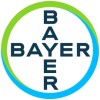
Efficacy of Simplified Two Drug Kaletra Regimen vs. Kaletra Triple Drug Standard of Care Regimen...
HIV InfectionThe purpose of this study is to obtain a preliminary assessment of the antiviral activity and tolerability of simplified Kaletra dual agent therapy as initial treatment for HIV infection, relative to a Kaletra three drug standard of care reference arm.

Vicriviroc (SCH 417690) in Combination Treatment With Optimized ART Regimen in Experienced Participants...
HIV InfectionsVicriviroc (vye-kri-VYE-rock) is an investigational drug that belongs to a new class of drugs, called C-C chemokine receptor type 5 (CCR5) receptor blockers. This group of drugs blocks one of the ways human immunodeficiency virus (HIV) enters T-cells (the cells that fight infection). The purpose of this 48-week study is to evaluate 2 dose levels of vicriviroc in participants with HIV who have not responded adequately to standard HIV treatments. This study was designed to evaluate the safety and efficacy of doses of vicriviroc, when taken in combination with other HIV drugs, in terms of ability to decrease the level of HIV (viral load) in the blood. The primary objective of the study was to evaluate antiviral efficacy of two doses of Vicriviroc maleate compared to placebo in combination with a protease inhibitor (PI)-containing optimized antiretroviral therapy (ART) regimen in CCR5-tropic HIV infected individuals failing a standard ART regimen.

Viral Dynamics and Pharmacokinetics of Abacavir and Tenofovir
HIV InfectionsOnce-daily nucleotide/nucleoside reverse transcriptase inhibitor (NtRTI/NRTI) combinations form the backbone of many regimens. Although efficacy data exists between tenofovir and the pyrimidine analogues (i.e. lamivudine and emtricitabine), recent clinical data suggests a potential interaction between tenofovir and purine analogs (i.e. abacavir and didanosine). Specific Aim 1: To evaluate the impact of an acyclic nucleoside phosphonate, tenofovir (TDF), on the intracellular metabolism of a purine nucleoside analog, abacavir (ABC), as a determinant of the antiviral potency of this nucleotide/nucleoside reverse transcriptase inhibitor (NtRTI/NRTI) combination. Hypothesis #1: ABC and TDF dosed together will have reduced antiviral activity, as measured by early plasma HIV RNA decay kinetics, than the drugs given alone. Hypothesis #2: ABC dosed with TDF will have reduced intracellular concentrations, as measured by the ratio of carbovir triphosphate (active metabolite of ABC) to deoxyguanosine triphosphate (endogenous nucleotide), compared to ABC given alone.

Treatment of Chronic Hepatitis C With PEG Interferon alfa2a and Ribavirin in HIV-Infected Patients...
HIV InfectionsHepatitis C2 moreCombination of PEG interferon and ribavirin is the standard treatment of chronic hepatitis C. Efficacy of this treatment has never been evaluated in HCV-HIV infected patients, who have previously been treated with a first line anti-HCV treatment. The purpose of the study is to evaluate the combination PEG interferon alfa2a-ribavirin in HIV-infected patients with chronic hepatitis C pretreated with interferon alone or interferon combined with ribavirin. The patients receive a dose of 180 µg of PEGASYS once a week and 800 to 1200 mg/day of ribavirin (according to weight) for 48 weeks. Primary outcome of the study is a sustained virological response, defined as an undetectable HCV RNA level 24 weeks after the end of anti-HCV treatment.

Study of NGX-4010 for the Treatment of Painful HIV-Associated Neuropathy
HIV InfectionsPeripheral Nervous System Diseases1 moreThe purpose of the study is to determine if an investigational drug, NGX-4010 (high-concentration capsaicin patch), is effective in treating painful HIV-associated neuropathy.

4-Day-A-Week Treatment Plan for HIV Infected Adolescents
HIV InfectionsThis study will determine if taking anti-HIV drugs 4 days a week will control HIV-1 viral replication in patients who have already had at least 6 months of documented viral suppression with full-time treatment. If this strategy is shown to be safe in this study, a larger study will be undertaken to determine if the strategy can decrease overall drug exposure and help young people adjust more easily to a chronic medication schedule.

Safety and Efficacy of BAY 50-4798 in Patients With HIV Infection
HIV InfectionsThe purpose of this study is to evaluate the safety of the experimental drug Bay 50-4798 in HIV positive patients receiving HAART and to test the drug's effect on the CD4+ T-cell count.

Switching HIV-1 Infected Subjects From a Highly Active Anti-Retroviral Treatment (HAART) Regimen...
HIV InfectionsThe purpose of this study is to demonstrate that virologically controlled HIV-infected individuals can successfully switch from a standard-of-care regimen dosed twice-daily or more frequently to a simpler once-daily (QD) regimen while maintaining virologic control, as evaluated by the proportion of subjects who continue to have plasma HIV-1 levels <50 copies/mL after switching to a QD regimen.

A Phase IIIb Study Comparing Two Boosted Protease Inhibitor-based HAART Regimens in HIV-infected...
HIV InfectionsThe purpose of this study is to compare the anti-HIV efficacy, safety and effect of serum lipids of two boosted protease inhibitor-based HAART regimens (ARV/RTV v. LPV/RTV) in HIV-1 infected subjects who have experienced their first virologic failure while receiving a NNRTI-containing HAART regimen.

Rollover Trial Safety and Tolerability of Combination Tipranavir and Ritonavir Use in HIV 1 Infected...
HIV InfectionsThe objective of this study is to determine the long term safety and tolerability of multiple oral doses of tipranavir (Aptivus) and ritonavir with a focus on the long term safety of the development dose (500 mg tipranavir/200 mg ritonavir BID) when administered with other antiretroviral medications.
